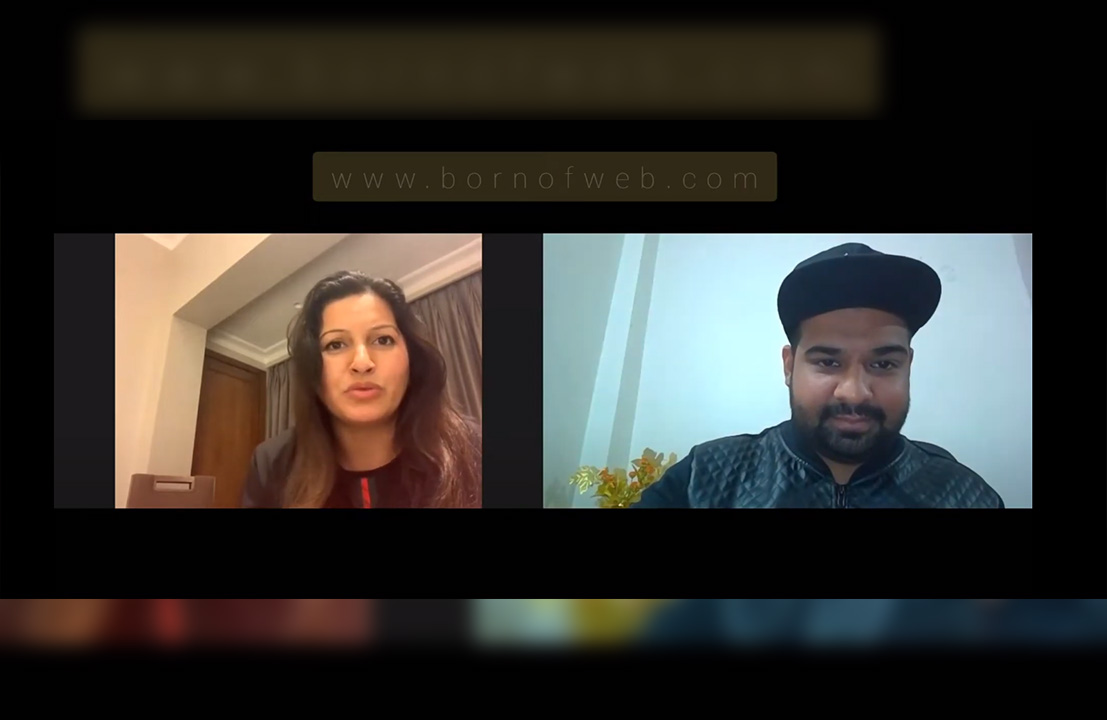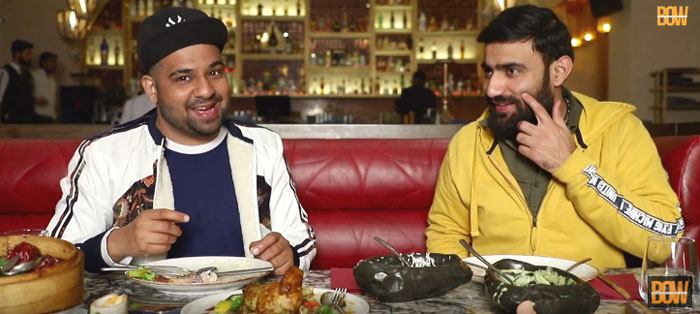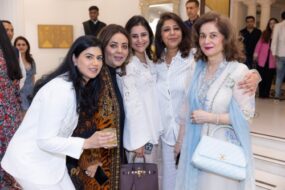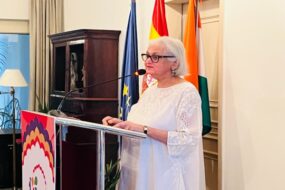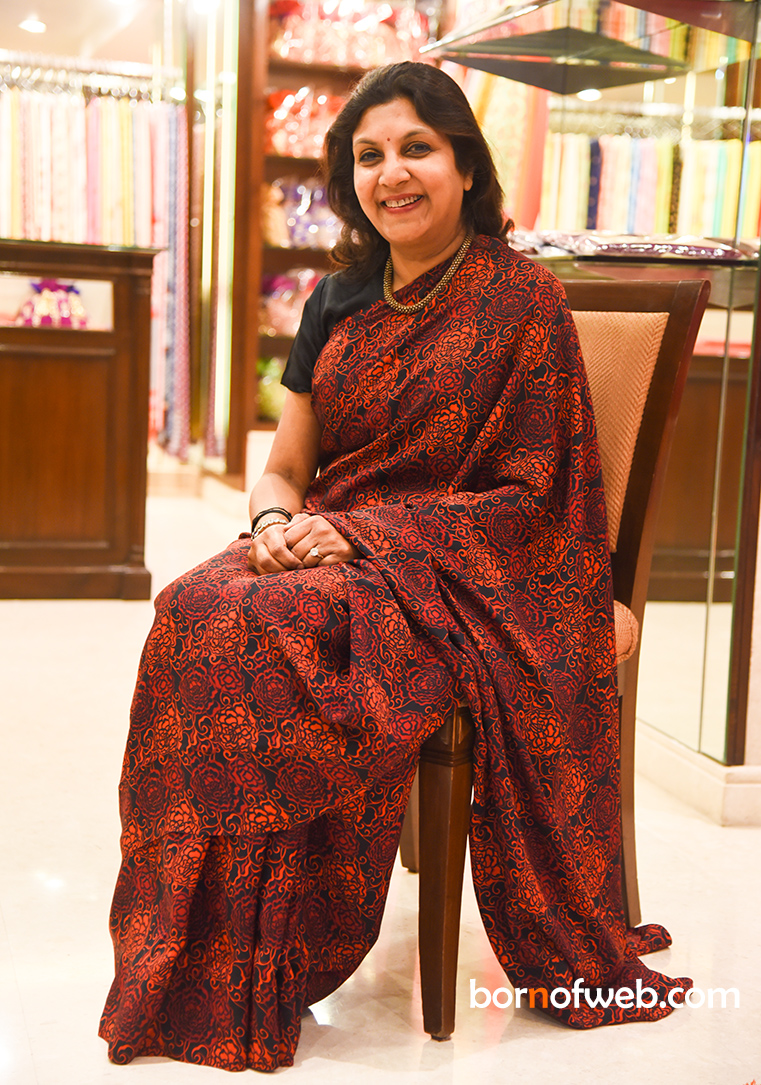
As the movement to promote handloom industry strengthens and the slogan of “Make in India” becomes the new mool mantra, it is befitting that we felicitate someone who has worked silently and diligently towards promoting indigenous textiles. Designer VIDHI SINGHANIA stands tall today with her concerted efforts to revive Kota as a fabric, breathing strength into the weave by working closely with the weavers and building a steady market for their masterpieces for over two decades. Her repertoire has now grown to include Banaras and the other Indian weaves. NAVNEET MENDIRATTA salutes the silent crusader
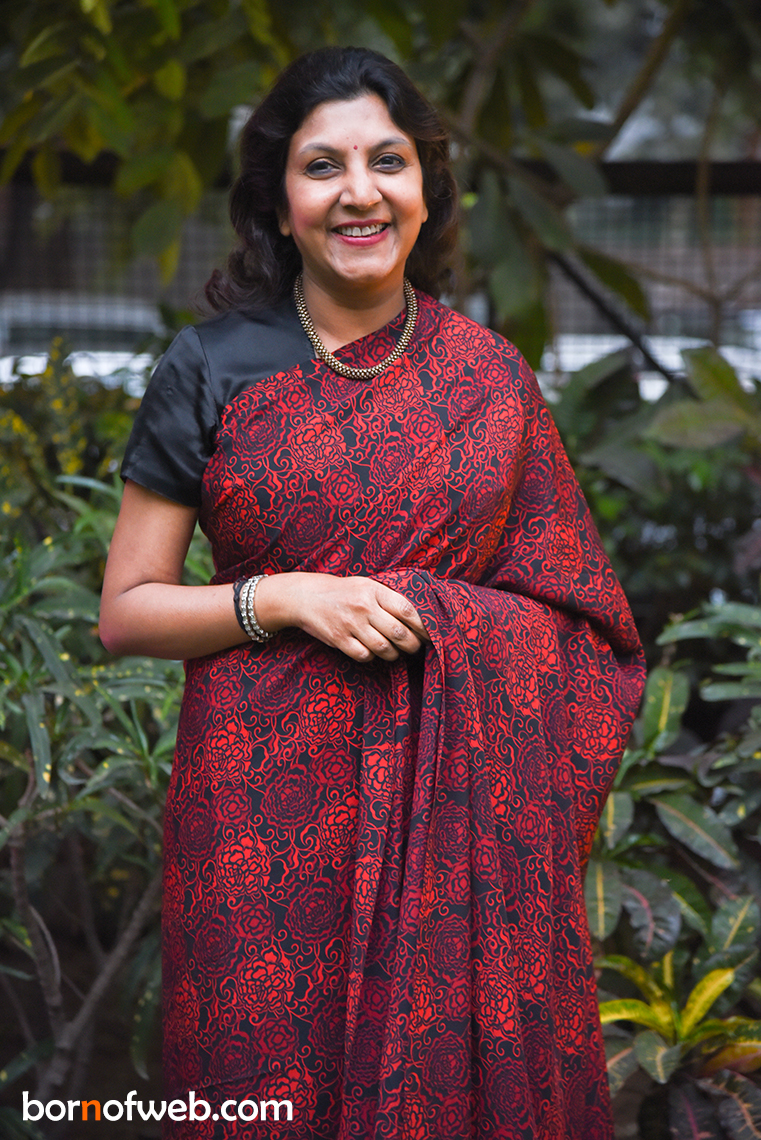
It’s a quiet day when we walk into Vidhi Singhania’s beautiful and grand set up in Greater Kailash. The green of the lawn space soothes the eyes with colourful saris at the show window adding the fresh spring appeal. Inside, neatly drawn rows of Kota and other handloom yardage are tempting enough for any visitor to indulge. The focus is handloom, and there is no way you can miss that.
Before I realise it, Vidhi is by my side. Elegantly draped in a sari, she steps up to share her vision. In matter of no time, we are discussing weaves and design impressions. Passion for handloom reflects clearly in her voice and you need no two guesses to figure what drives this very soft spoken woman. As I browse through the rows, my attention is drawn towards the beautiful Kota saris that bear Vidhi’s signature borders and weave.
(Don’t Miss) Delhi’s crème de la crème attends Born of Web’s first bash!
Don’t miss- There’s no fun without competition in business: Mallika Jain, founder, Fashion Capsule
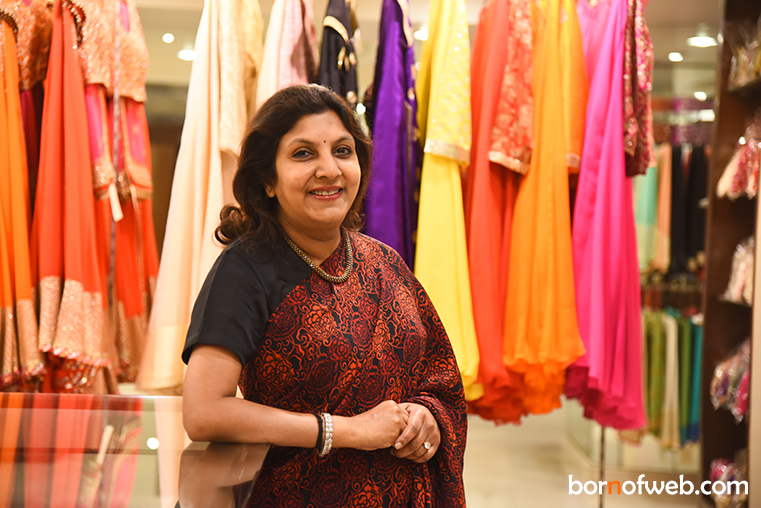
“Textiles happened to me by chance and Kota is where it all started for me. I moved to Kota in 1994-95 with my husband, who was setting up industry there. As we settled in the small village that Kota was, I began to explore the surrounds and came upon a small weaving community. Those days, I was on a constant look out for interesting ideas for gifting – corporate and personal. And I realised very soon that there were not many options available,” she shares.

It was to fill up for that bit that she started developing her own line of saris. She would go to the weavers and develop new patterns that she could call her own. “We looked at design, made it contemporary and yet safeguarded its look. Then, we looked at the colour palette, the embellishments and most important, the quality. It had to be really good,” she tells me.
And her experiments paid off. “What was interesting that whenever we developed something new people seemed to like it and came back for more. This, in turn, became a point of encouragement for me and I slowly found myself getting more involved and setting up my own line. In short, I never planned this and I am not trained in the textile world. But, I learnt a lot from the weavers,” she says.
Watch Rapid Fire Round with Vidhi Singhania
For someone who always loved saris, love for textile was natural to follow. “Mommy makes a very strong style statement. I grew up watching my mother in beautiful saris and her wardrobe was very extensive. She had the most exquisite tie-dye chiffons. Looking at her, I always wanted to wear a sari. To date, she is my style icon and it is from her I get that discerning eye to pick up a rare weave,” Vidhi tells me as we discuss her rich knowledge of Indian textiles. A young bride (Vidhi was married at the age of 19 to industrialist Nidhipati Singhania), her trousseau comprised 101 rare weaves from across India, that were carefully selected by her mother. Now a grandmother to three, the work-life balance comes easy with family support.
“My father belongs to Rajasthan and I grew up in Mumbai. I was married in Kanpur and it was a big change from Mumbai. It has a very different culture for me. But that was before we moved to Kota. But in the entire journey my family’s support has only encouraged me to explore more,” she avers. So if it was her husband at first who backed her idea, her sons helped her strengthen her passion and now her daughters-in-law, Sonam and Sana, are helping her re-position the brand and take it to another level.

“To tell you the truth, Vidhi as a label grew wonderfully in these two decades. But it is now I am realising the power of publicity and media. The two, for me, stand for awareness – bother consumer and weavers. In India every pocket has its own treasure trove of weaves. They are so much a part of our heritage; it is hard to imagine that someone may not appreciate it. Spreading awareness is the key,” she shares with utmost honesty.
It is perhaps this humility that makes her popular with her team and the weavers. She even names saris after the weavers who put them together. “I name a lot of my saris after women weavers who have put together that sari – say, a Shamina jaal or a Ruki border or a Noorjahan sari… That is my way of acknowledging their hard work and letting the world know who they are,” she says.
An optimist to the core, she believes that technology can actually change the fortunes for the weavers. “We have 40 million people involved in this process of weaving. And their conditions definitely need to be seen into and monetary encouragement be given, if the tradition has to be preserved. What makes me hopeful is that, today weavers have accessibility. Technology is changing things for them. They can direct sell online and then, with organizations like the FDCI promoting Indian textile, I am positive that we will soon see the revival of the weave in a big way,” she summises.
Don’t miss- Shovana Narayan: My life is influenced by lessons of Gita
Today, Vidhi stands for not only Kota but also the weaves of Banaras and the rest of the country. So are there any challenges that she faces while working with the textile? “Quality,” she is prompt to tell me. “Over the years, the yarn which was so pure, has seen so many changes with synthetic adulterating the base. This is true for both Kota and Varanasi and even chanderis, silks or say, Zari. We have a lot of synthetic silk coming into Varanasi and that really pains me,” she says forcefully. Could it be the cost factor, I reflect. She nods before adding, “One must realise that a handwoven product, done with a correct yarn and correct zari is going to be expensive. It cannot be as cheap. We need to educate our weavers and clientele so adulteration can be checked in the weaving.”
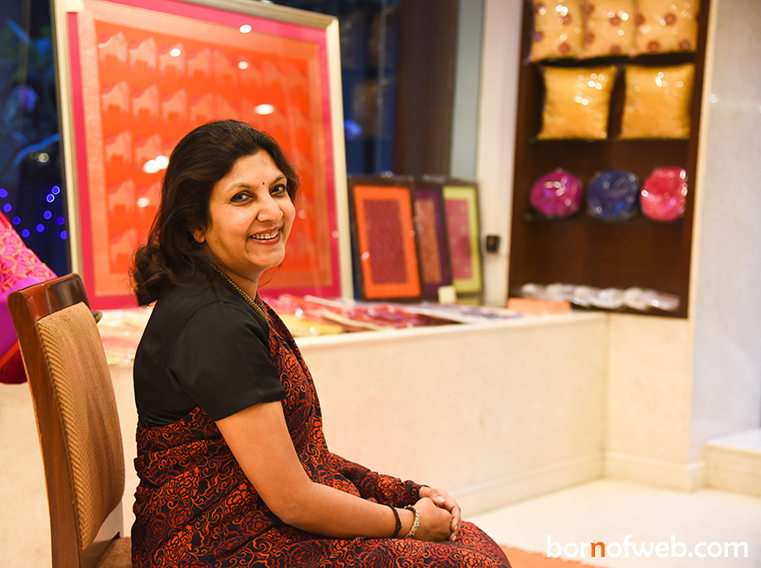
On her part, Vidhi is doing her bit. A steady base in Delhi and Mumbai (Vidhi showcases out of Ensemble there), Vidhi has built a loyal customer base for herself. Always the one to do solo shows, she is now opening up to exhibitions to spread the label in moving with the times. This year, for the first time, she even showcased at Royal Fables exhibition in Mumbai.
The other big project that Vidhi is looking forward to is a film called Rani, where she has been asked to dress Rani of Jhansi. Though the research has started, the work on the film that is being backed by New York-based producers is yet to begin. “I am really looking forward to working with the Nauwari or the nine yards. Paithani is another weave that needs a push from the region,” she shares.
The conversation seems ceaseless with Vidhi and you can go on for hours talking to her about textiles. But it is time for me to sign off. Not, however, before I ask her for a message to the young women striving to make big in the world. “Never hold back. Whether you make it or not, follow your passion, your conviction. Don’t get intimidated. Failure and success are hard to predict but what matters is your efforts and will to make it big,” she advises.
We hope that there are more like her to drive and revive the industry. Wishing her luck!

This interview is part of Born of Web’s exclusive interactive series, Women Achievers’ Diary, in association with Tantra by Ratna Jain. Know more about the series here!
Let’s Connect!
Facebook: https://www.facebook.com/bornofwebIndia/
Instagram: https://instagram.com/born_of_web/
Twitter: https://twitter.com/BornOfWeb
Google Plus: https://plus.google.com/u/1/+BornofWeb
Pinterest: https://www.pinterest.com/bornofweb/




